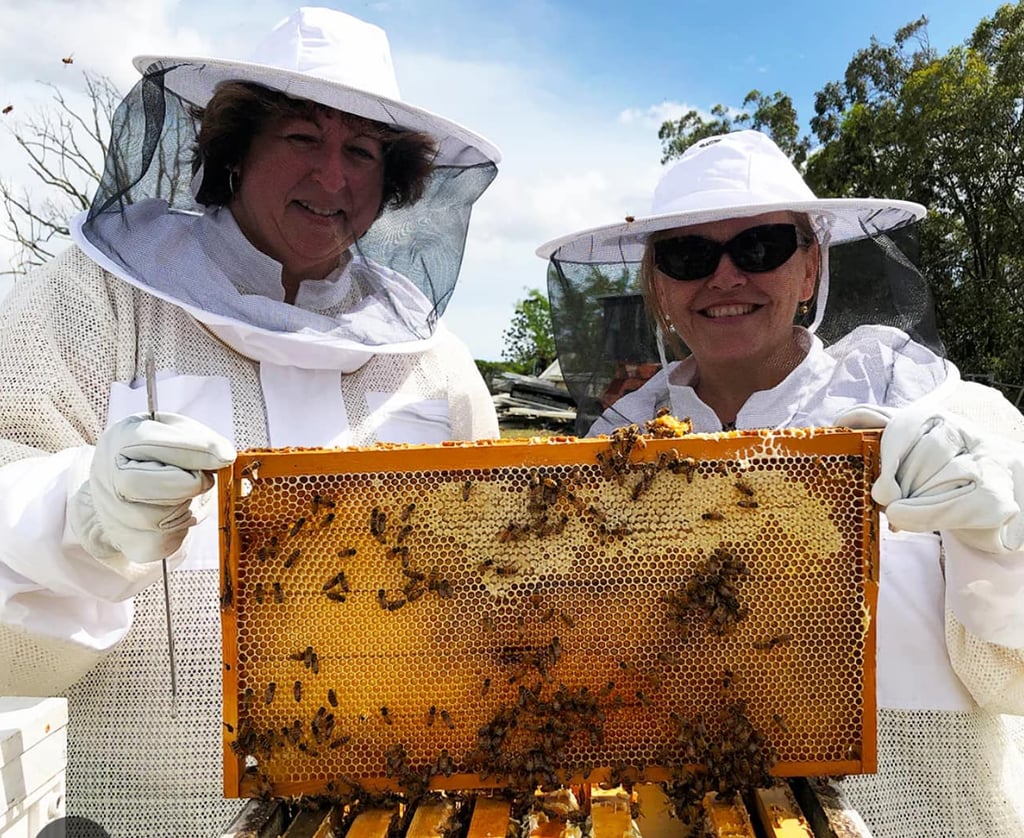Mastering Seasonal Hive Management
A Comprehensive Guide for Year-Round Success


Introduction
Thriving colonies don’t happen by accident — they are the result of a beekeeper’s deep understanding of bee biology, seasonal cycles, local weather conditions, and careful planning. Whether you run a small backyard apiary or manage thousands of hives for commercial honey production and pollination contracts, mastering seasonal hive management is the key to consistent yields, healthy bees, and sustainable operations.
This comprehensive guide will equip you with advanced, practical knowledge to navigate each season’s unique challenges. Along the way, you’ll learn how protective suits, jackets, and gloves from Heliotrope Bee ensure your safety and comfort during every inspection, split, and treatment — no matter the weather or hive temperament.
Chapter 1: The Bee Colony’s Natural Rhythm
Honeybees operate according to the sun and flowering seasons, not the human calendar. Understanding the biological clock of a colony is step one:
Spring: Brood expansion, queen’s egg-laying peak, buildup for honey flow.
Summer: Peak foraging, honey storage, swarming risk if space is limited.
Fall: Population naturally declines, focus shifts to winter stores and healthy queen.
Winter: Cluster formation to maintain warmth, minimal brood rearing.
Align your management actions with this natural rhythm to support — not disrupt — colony needs.
Chapter 2: Spring — Awakening and Preparation
Key Goals:
Assess winter survival and food stores.
Stimulate brood rearing.
Prevent early swarming.
Checklist:
✅ Inspect for queenright status and healthy brood pattern.
✅ Feed light sugar syrup if stores are low, but avoid overfeeding.
✅ Reverse brood boxes to give bees access to open comb.
✅ Replace old, dark comb to prevent disease buildup.
✅ Add supers if nectar flow starts early.
Tip: Spring inspections mean variable weather — sudden rain or winds can trigger defensive behavior. Heliotrope Bee’s ventilated suits and durable gloves protect you from stings while giving freedom of movement for quick box lifts and frame checks.
Chapter 3: Summer — Maximizing Honey Flow and Colony Strength
Key Goals:
Control swarming.
Maintain strong foraging workforce.
Protect hives from pests and heat stress.
Checklist:
✅ Split overcrowded hives or add more supers to prevent swarming.
✅ Check for signs of queen cells weekly.
✅ Place shade covers or ensure ventilation in hot climates.
✅ Begin regular mite monitoring (sugar roll or alcohol wash).
✅ Harvest ripe honey carefully, leaving enough for bees.
Heliotrope Bee’s lightweight mesh jackets are ideal for hot mid-summer inspections, providing airflow without compromising protection.
Chapter 4: Fall — Preparing for Winter Survival
Key Goals:
Reduce pest loads.
Consolidate colonies.
Ensure adequate food reserves.
Checklist:
✅ Treat for mites with oxalic acid or other approved methods.
✅ Combine weak colonies with stronger ones if needed.
✅ Check for Nosema or other diseases.
✅ Feed heavy syrup if honey stores are low.
✅ Reduce hive entrances to deter robbing and pests.
This is a critical time when overlooked mites can doom winter survival. Using Heliotrope Bee’s ergonomic gloves helps you handle sticky frames and apply treatments with precision.
Chapter 5: Winter — Monitoring Without Disturbance
Key Goals:
Minimize disruption.
Monitor for moisture and ventilation.
Plan for early spring needs.
Checklist:
✅ Ensure top insulation is dry and allows ventilation.
✅ Clear snow or debris blocking entrances.
✅ Periodically listen for cluster sounds using a stethoscope.
✅ Prepare emergency feed (fondant or sugar bricks) if warm spells cause early brood rearing.
✅ Order new equipment and protective gear ahead of spring.
Heliotrope Bee’s full-body suits are designed with layered insulation options for beekeepers working in harsh winter conditions or performing emergency checks.
Chapter 6: Regional Considerations
Management must adapt to local climate and forage conditions:
Tropical & Subtropical Zones: Shorter winters mean multiple brood cycles; monitor for year-round pests.
Temperate Zones: Long, cold winters require robust fall feeding and good ventilation.
Arid Regions: Drought-resistant forage and supplemental feeding may be necessary.
Seasonal planning should include local agricultural calendars — understanding when crops bloom helps plan your colony build-up and pollination contracts.
Chapter 7: Advanced Strategies for Commercial Operations
Large-scale operators must coordinate labor, transport, and treatment schedules across hundreds or thousands of hives. Best practices include:
Digital hive tracking for real-time health data.
Scheduled crew inspections with clear task lists.
Rotating equipment to reduce disease transmission.
Standardized protective gear like Heliotrope Bee’s custom-branded suits for staff safety and professional appearance.
Strong seasonal planning directly impacts your bottom line — healthy colonies mean reliable honey yields and high-value pollination contracts.
Chapter 8: Building a Year-Round Management Calendar
Creating a written calendar helps you:
Plan interventions before issues arise.
Balance labor demands across peak periods.
Coordinate orders for feed, treatments, and gear.
Heliotrope Bee’s expert support team can help you select the right protective clothing for each seasonal challenge, from lightweight summer jackets to ventilated full suits for mite treatments in peak heat.
Conclusion
Beekeeping success isn’t just about reacting to problems — it’s about anticipating the seasonal needs of your bees and providing thoughtful, timely care. Whether you manage a single hive in your backyard or thousands spread over multiple counties, understanding and mastering seasonal hive management will protect your investment, sustain your bees, and ensure consistent yields for years to come.
Since 2012, Heliotrope Bee has supported beekeepers worldwide with premium protective apparel engineered for every season and every task. Equip yourself with the right gear to work confidently, efficiently, and safely — no matter what the bees or the weather bring your way.
Contact us anytime for expert advice or custom orders:
📧 sales@heliotropebee.com
🌐 www.heliotropebee.com


